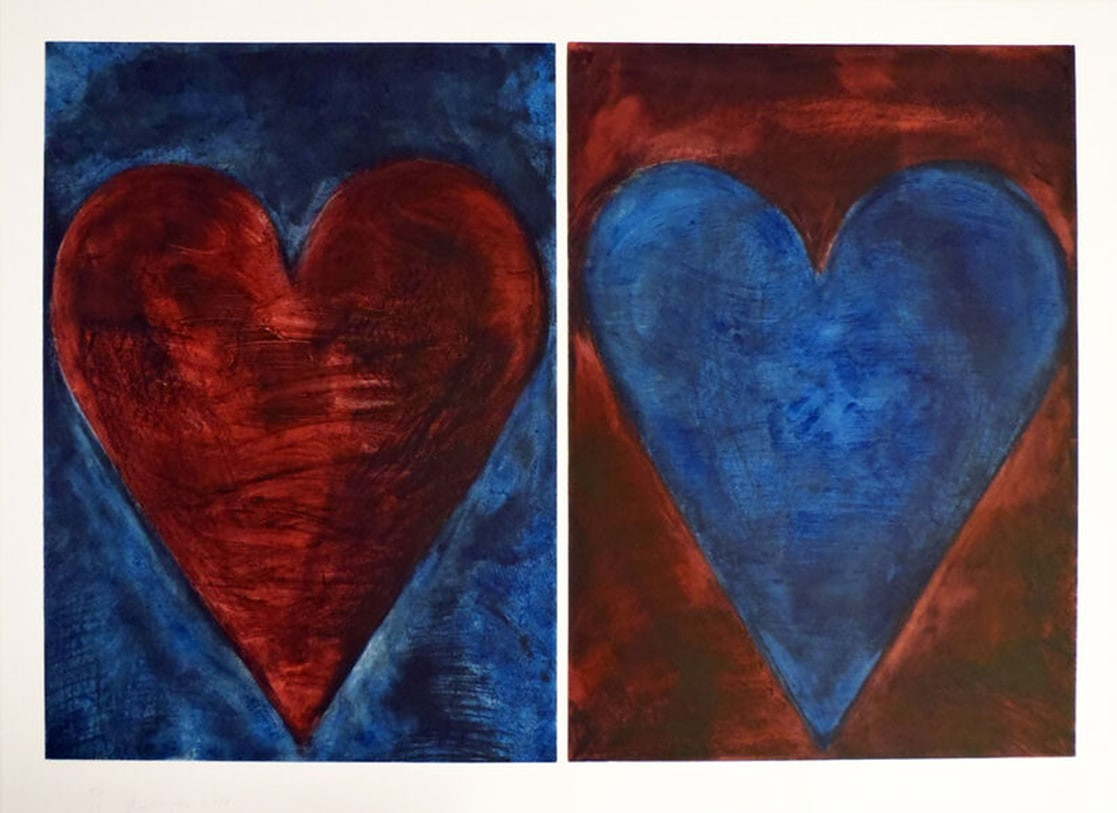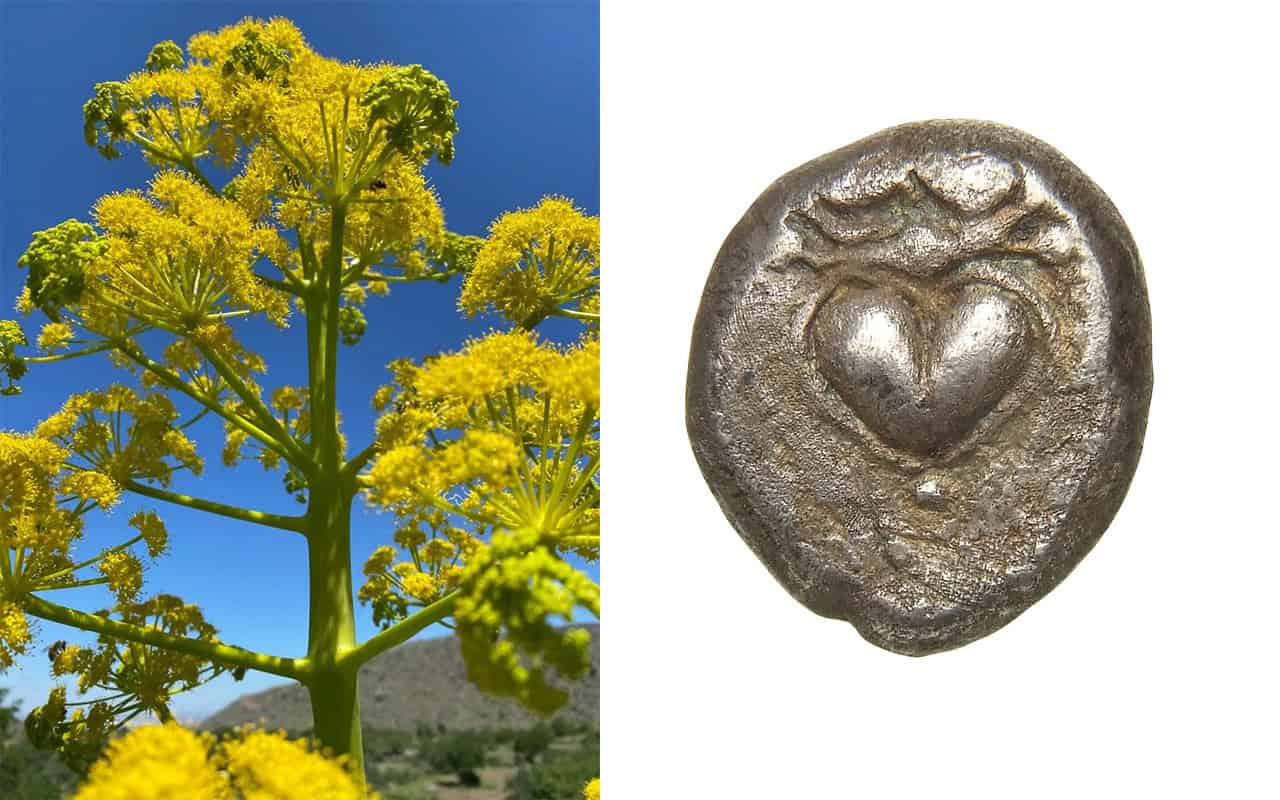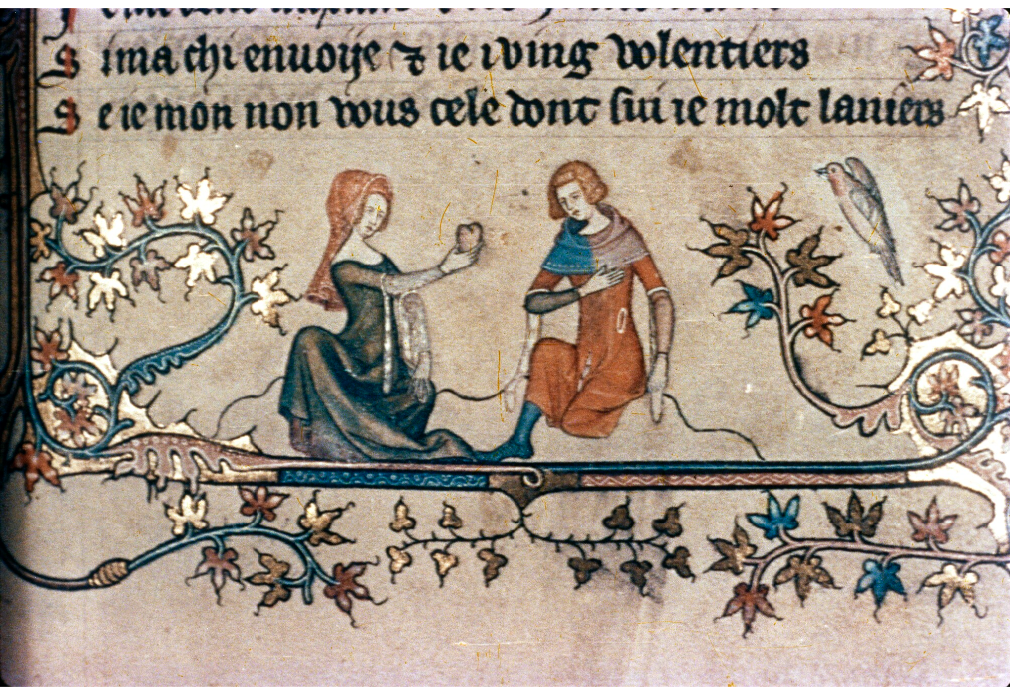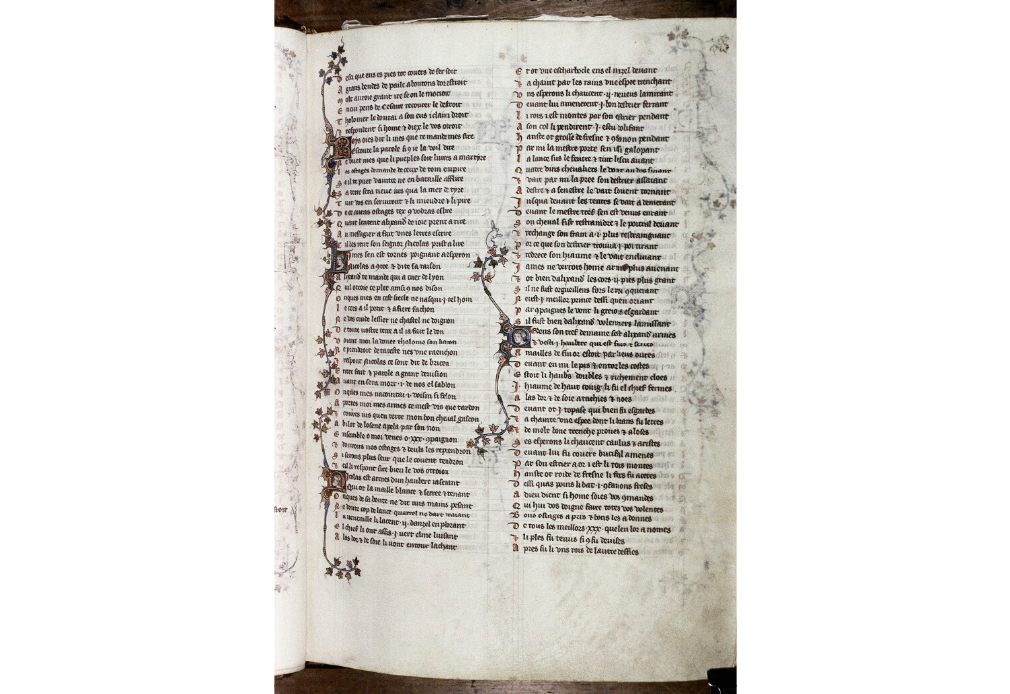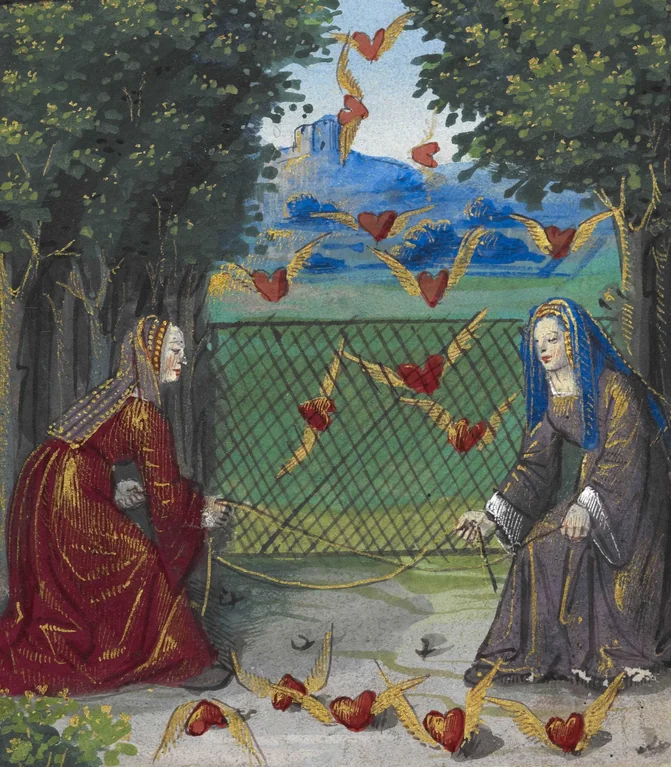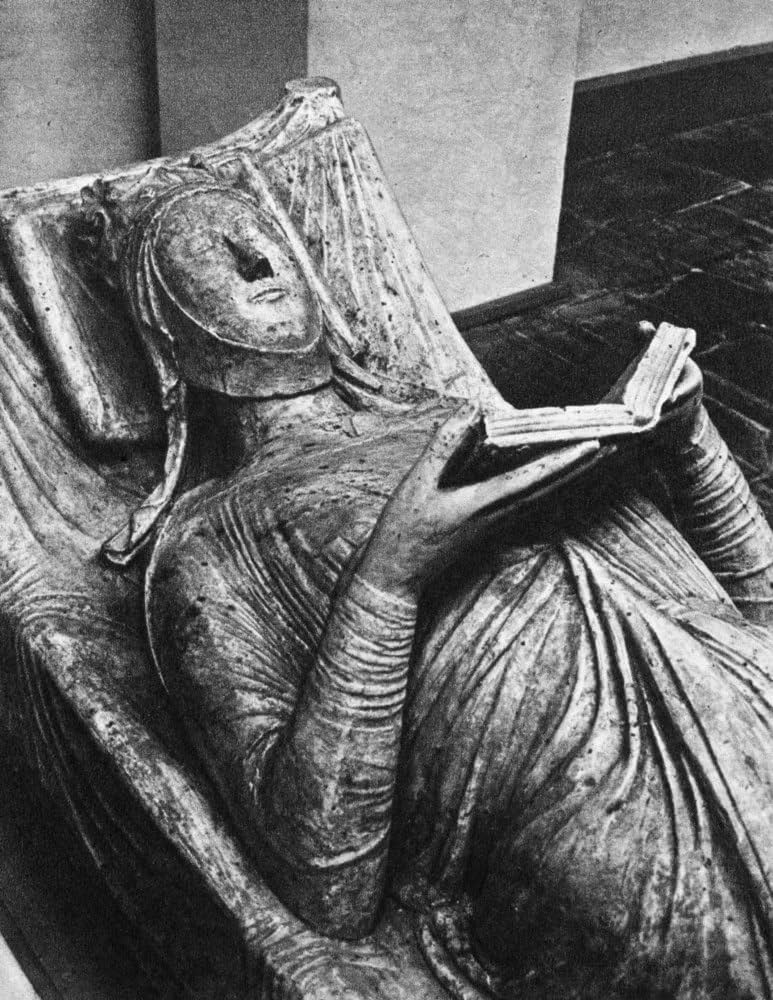created 2025-06-05, & modified, =this.modified
rel: Book of Symbols - Reflections of Archetypal Images History of Dating, Calling
Why I’m reading
Curious about the link between the symbolic heart, or actual heart and love.
The ties are many.
When in love your heart beats fast etc. But if I think where love is found the most necessary path is the mind – but at least initially it is that butterflies in the stomach, anxious feeling.
This is unfortunate, but also the telltale sign.
Ancient Egyptians believed the heart was the seat of the soul. If the heart was pure in the afterlife, it would weigh less than the feather of truth, Maat, they would enter the afterlife. If not, it would sink and they’d be devoured by a beast.
The Singer of Amun Nany, Funerary Papyrus

The heart icon as a symbol of love first appeared during the medieval period of cultural renewal. It was created simultaneously for secular and religious works of art and flourished most notably in courtly circles. Once born, the amorous heart motif found its way into thousands of items—such as jewelry, tapestries, ivory carvings, and wooden chests—all produced for the enjoyment of the upper classes. This symbol of love, at first known only to elite members of society, has by now become the property of everyone who can see.
The heart is symmetrical, two equal halves merged. The round lobes might invite comparison to breasts and buttocks.
The Japanese character for love contains within it the character for heart.

The Heart In Antiquity
Ancient Greeks, in lyric poetry identified the heart with love.
Sappho is an early example who agonized over her “mad heart” quaking for love.
Love shook my heart, Like the wind on the mountain Troubling the oak-trees.
In old age, she spoke of her “heavy heart.”
Silphium
Thought
A digression here because the text mentions Silphium, and extinct plant that has the fruit with the appearance of a heart – as depicted in this coin.
Silphium (known to Greeks as laserwort) was a herb that grew abundantly in the plains of Cyrene in 6th century BC. According to ancient sources it was a cure-all but also supposed to prevent pregnancies.
But it was also used as an aphrodisiac. Immortalized in the love poem of the Roman Bard Catullus.
You ask how many kissings of you, Lesbia, are enough for me and more than enough. As great as the number of the Libyan sand that lies on silphium-bearing Cyrene …
Another coin depicts the plant along with a citizen pointing to her crotch.
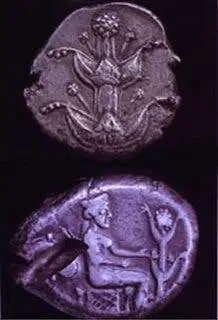 The plant ended up being overharvested and consumed by grazing animals, to extinction.
The plant ended up being overharvested and consumed by grazing animals, to extinction.
It’s unlikely it had anything to do with the heart icon later popularized for love.
Thought
Despite not being a likely reference, it still is interesting that a symbol could a millennium later come around and resemble it, and carry some of the meaning when the reference is extinct.
Ovid’s Art of Love
Ars amatoria gained popularity in his day, and even now at least ten translations exist on Amazon.com. Ovid’s heroes are warriors committed to winning and bedding a designated woman.
Love is warfare: sluggards be dismissed. No faint-heart ‘neath this banner may enlist.
Ovid and eros: ”I hate a union that exhausts not both”
But ne’er must you with fuller sail outpace Your consort, nor she beat you in the race: Together reach the goal; it’s rapture’s height When man and woman in collapse unite.
Ovid was later sent into exile by Emperor Augustus, as he made adultery a crime – wishing to reign in women’s sexual liberties. Though Ovid was obliged to spend the last years of his life in exile on the distant shores of the Black Sea, he was not forgotten in Rome, where his works continued to be immensely popular.
Vena Amoris (Vein of Love)
The wedding ring finger as explained by second-century Latin author Aulus Gellius:
When the human body is cut open as the Egyptians do… a very delicate nerve is found which starts from the [ring] finger and travels to the heart. It is, therefore, thought seemly to give to this finger in preference to all others the honor of the ring, on account of the loose connection which links it with the principal organ.
Arabic Songs From the Heart
Among nomads meetings were often temporary and partings an occasion for sorrow. One poet Ka’b Bin Zuhair cried out, “Su’ad is gone, and today my heart is love-sick.”
The lover was constantly on the move, surrounded by vast expanses of desert, battered by winds, beholden to his camel, and relieved by the sight of tents in the distance. The women they loved, with their flowing robes and smell of musk, represented a kind of paradise, though poets often depicted them as capricious, like water in the desert.
Legendary Lovers
- Anthony and Cleopatra for the Romans
- Abélard and Héloïse for the French
- Tristan and Isolde for the French and German
- Lancelot and Guinevere for the English, French
- Romeo and Juliet for the English
Arab culture has the figures of Jamil and Buthayna, Majnun and Layla, Kuthayyir and Azza – the seeds of “courtly love”.
Jamil (660-701) offered an archetype that was gallant, faithful and chaste, reflecting the values of Islam – allowing an emotional distant bond which may not be physically consummated.
Jamil is infatuated with a young woman from his tribe, Buthanyna. She responds and they meet occasionally far from the eyes of guardians – indiscretions beyond a kiss could prove fatal to do a Bedouin woman. He asks for her hand in marriage but her family has found a more advantageous match. Despondent, he continues to love her in her marriage. He held fast to his exclusive love, taking comfort he’d meet her in paradise. Buthayna became something of a holy figure, the object of Jamil’s daily prayers. He and his fellow poets came to regard love like a religion, with the beloved installed as its reigning deity.
French and German Songs from the Heart
Herr Alram von Gresten: Minne Gespräch, from Codex Manesse (1300-1340)
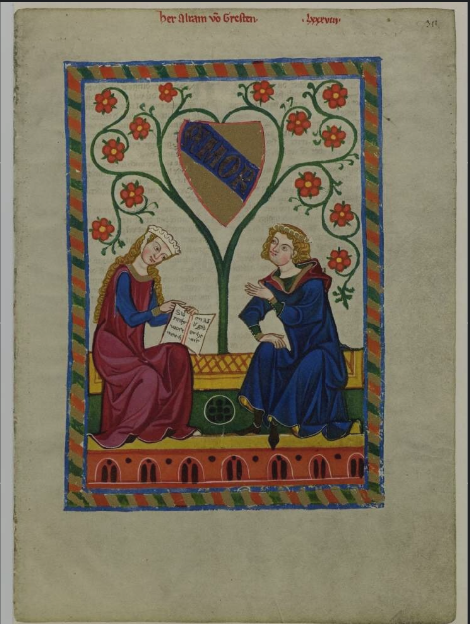 Courtly love required the troubadour to pledge his heart wholly, to one woman. Wherever he wandered, he proclaimed his undying love for the one who had aroused his “yearning heart.”
Courtly love required the troubadour to pledge his heart wholly, to one woman. Wherever he wandered, he proclaimed his undying love for the one who had aroused his “yearning heart.”
fin’ amor = impossible to translate, close to “extreme love, refined love, or perfect love.”
13th Century Minstrel Sordello:
Love engraved Your features in an image Cut deeply into my heart, And so I’ve handed myself over, To do whatever pleases you, Finely and firmly through all my life
Locking love into one’s heart became a literary trope.
You are mine, I am yours, Of that you can be certain. You are locked Within my heart The little key is lost: You must dwell there forever.
Though these paens were written by men, women were not portrayed as helpless or subordinate. Despite subjecting himself to trials and suffering, the ultimate choice of the heart resided in the woman. This ran counter to real life relations where men had control of their wives, and dominance in marriage was reinforced with a notable difference between spousal age (a man marrying a woman ten years her senior at 17.)
The cause of this 12th century reversal are debated.
- influence of Arabic poetry which treated inaccessible women like semi-deities
- the cult of the virgin Mary refining influence on both men and women
- the crusades where women assumed greater power while men were waging war
- the rise of queenship, suggesting women were meant to be obeyed.
Romances of the Heart
The word romance comes from the word roman – a narrative written in one of the Romance languages derived from Latin (Italian, French, Spanish, Portuguese, Romanian).
Roman de la poire - romance of the pear
A 13th century Romance. The title is derived from a central scene where the damsel shares a pear which she has peeled with her teeth with the lover.
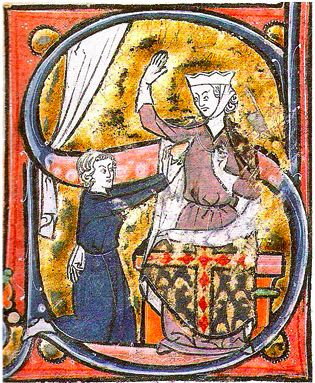
Mirror case, A Lady Crowning Her Lover ca 1300
The heart was shaped liked a pinecone because it is the way medical authorities described it since the time of Greek Physician Galen in 2nd century CE.
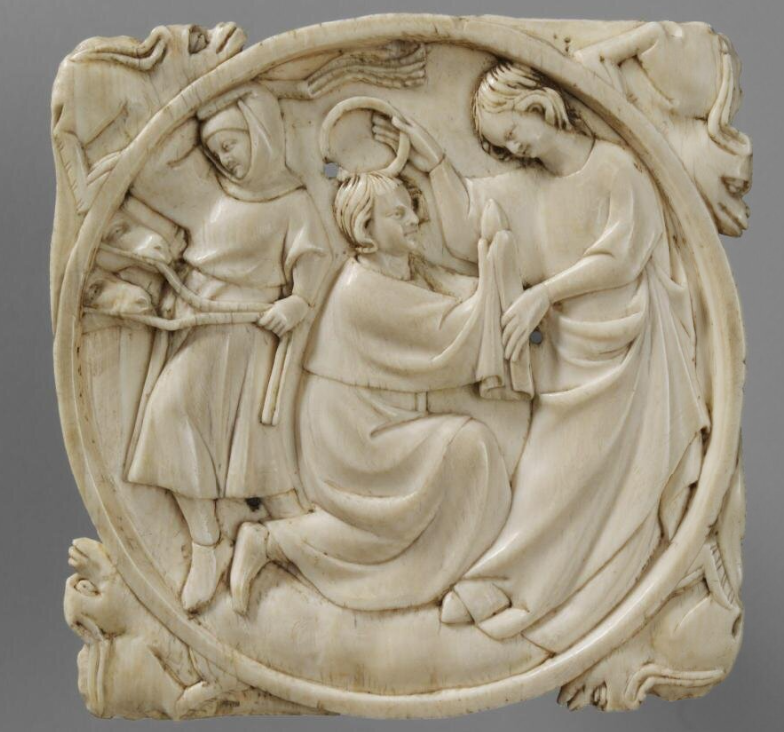
The scene of a courtly couple playing chess (possibly Tristan and Isolde) was a metaphor for the strategies of seduction.
Jesus
Catholic Church found new ways of expressing love in the 11th-13th century by focusing on the heart of Jesus, which was human and divine.
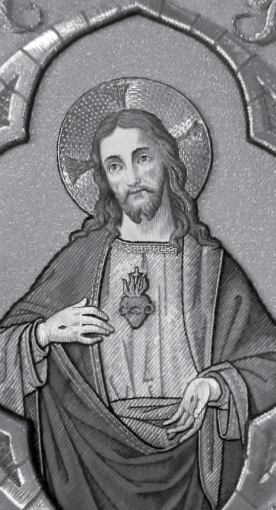 Religious heart was explicitly hostile to amorous heart, as the amorous was seen as a rival to the love of God.
Religious heart was explicitly hostile to amorous heart, as the amorous was seen as a rival to the love of God.
Wounds and marks were seen as divine favor, in accordance to the gash in Jesus’ side.
Other stigmatics, predominantly women, subsequently experienced marks on their hands, feet, chests, wrists, foreheads, or backs, and the Church subsequently honored many of them as saints.
Caritas
13th century Italy, a form of love that encompasses the love of god and neighbor (charity).
Dante, the world is ruled by the lord of love and the heart is love’s dwelling place, activated by the right person – for him Beatrice, beautiful spiritually and physically (saggia – wise or virtuous):
Then beauty appears in a virtuous woman, Pleasing the eyes so much that, within the heart, a desire for the delightful thing is beforehand. And it dwells there [in the heart] until the spirit of love is woken. And a worthy man does the same in a woman
They met when young, and she remained in his mind even though he only saw her a few more times (she died at age 24 during childbirth.)
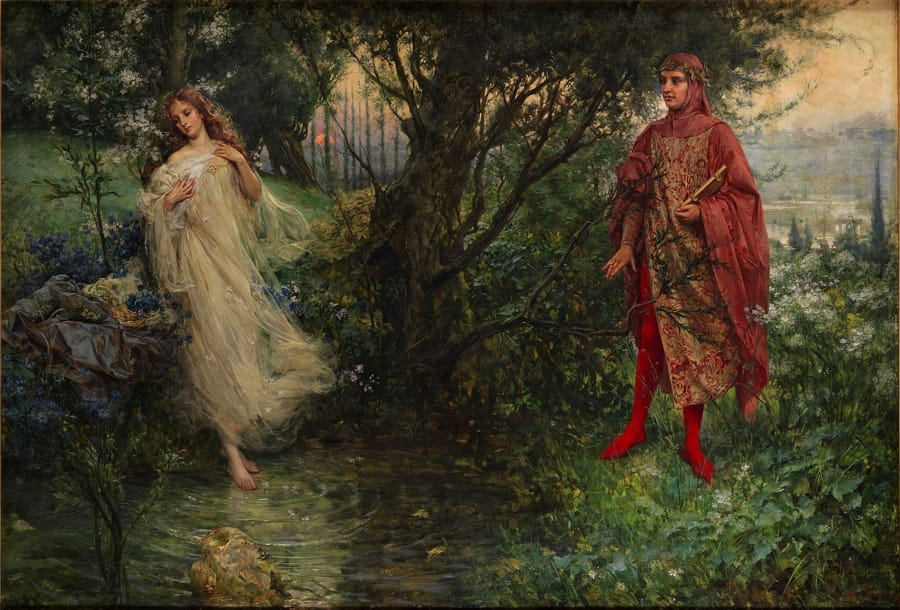
Any story of love is ultimately contemporary
Giotto di Bondone 1300 - Franciscan Allegories: Allegory of Chastity
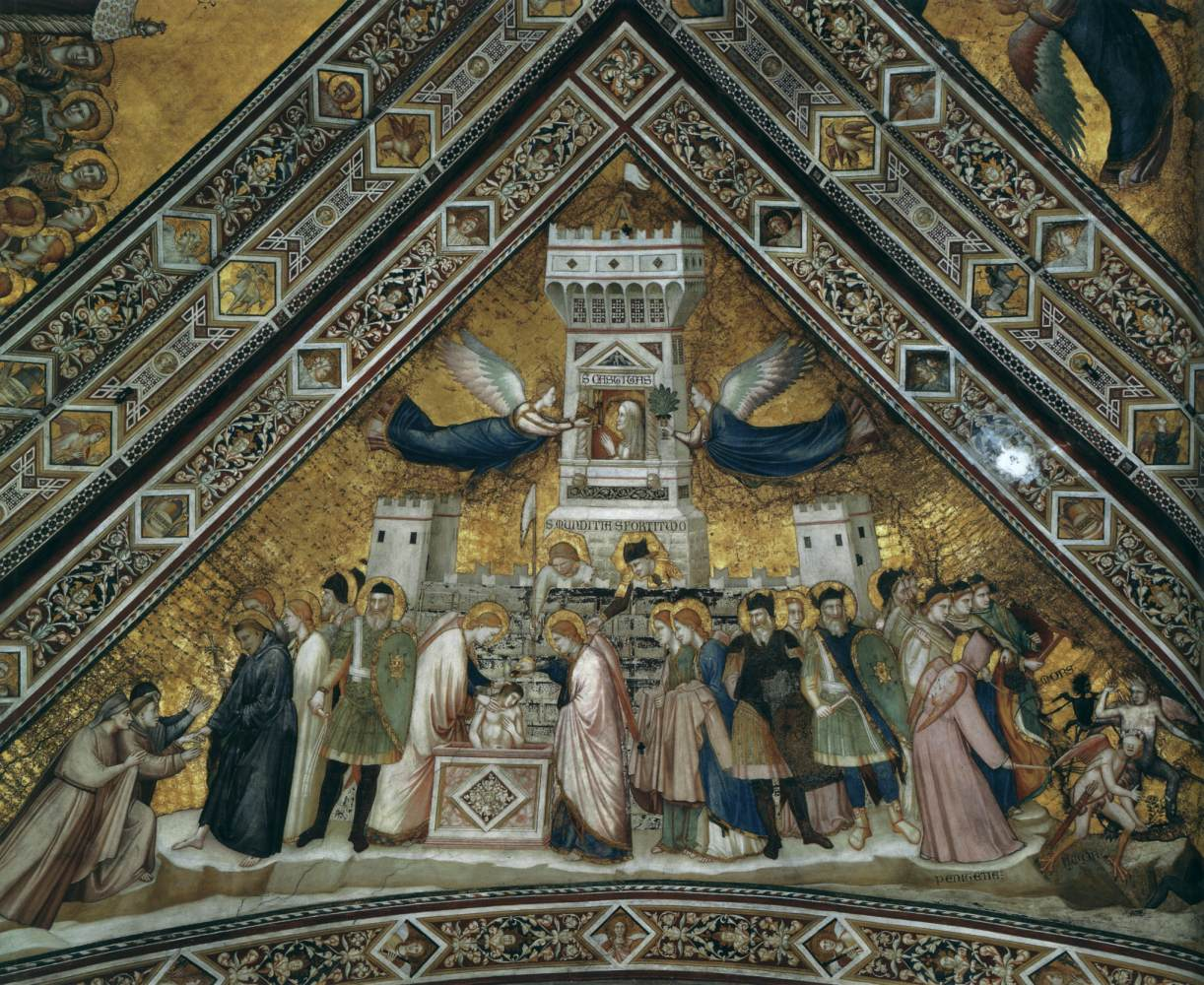
In a well-fortified castle, Chastity rules: only angels can enter here. In order to reach her, a long path must be followed. The representatives of the three divisions of the Franciscan order (a lay brother, a Franciscan and aClare) have climbed the hill. They too, as the middle scene shows, will be washed and dressed by angels. On the other side the extremely vivid and bizarre figures of demons are being cast into the abyss.
They are Unchasteness (Immunditia) with the boar’s head, Burning Desire (Ardor) with the flaming head, and Love (Amor) with the clawed feet and the hearts tied around him. The round is completed by the spider-legged, devilish Death (Mors).
Icon
Romance of Alexander written by Lambert le Tor and finished by Alexandre de Bernay. One of the illustrations has the first heart icon symbolizing secular love.
Jehan de Grise and his workshop, “The Heart Offering,” 1338–1344
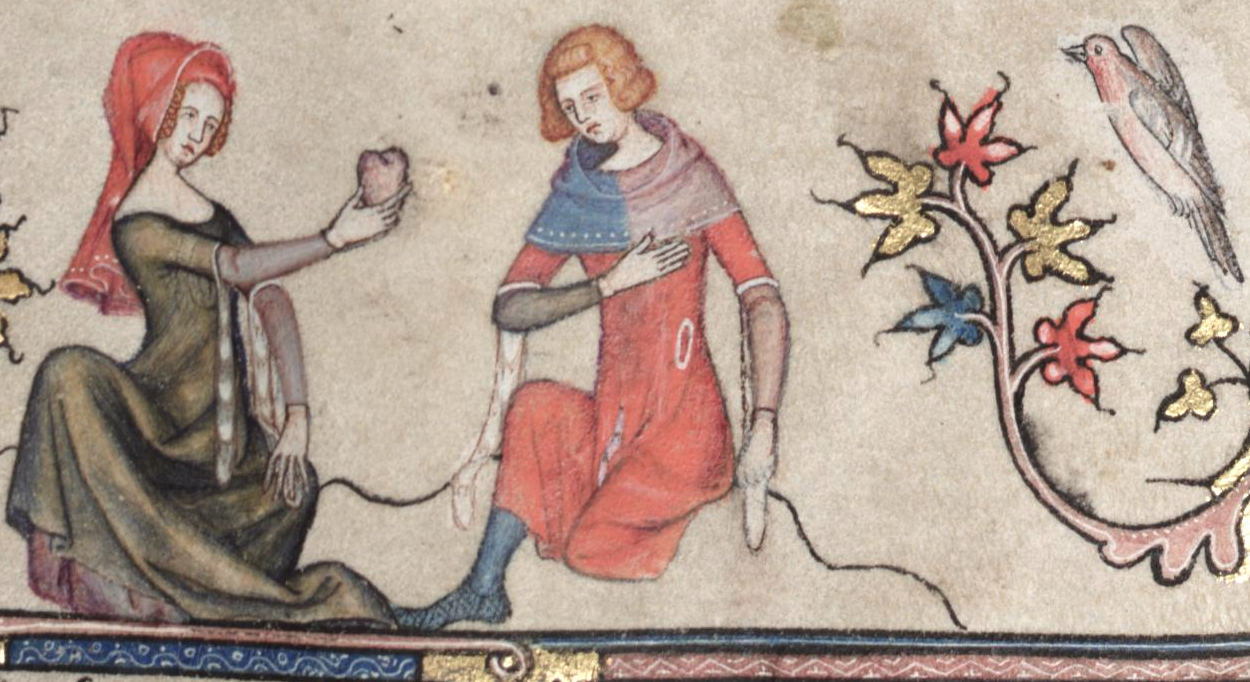 The scene containing the heart image appears in the lower border of a page decorated with sprays of foliage, perched birds, and other motifs characteristic of French and Flemish illumination.
The scene containing the heart image appears in the lower border of a page decorated with sprays of foliage, perched birds, and other motifs characteristic of French and Flemish illumination.
He touches his breast from where it came.
Thought
I understand the correct interpretation but, just looking at this image, naively, it doesn’t look like he has given her anything. It looks like she is showing him a heart, held aloft and he is entreating her to confer it onto him where it might be missing.
It shows up on fol.059r where it makes sense when viewed in full, with the contrast of the scene.
On the right he’s offering her a gift as well, but material.
Image of an illuminated page in it
Most of the scenes have nothin to do with the narrative, which involved a fanciful narrative surrounding Alexander the Great.
In 1300s the heart icon became part of of luxury items like brooches and pendants. Also weaving and tapestries. And jewelry.
Emblèmes et Devises d’amour (Love Emblems and Mottos) Sala’s tiny book was meant to be held in the palm of one’s hand—it is only four-by-three inches—and contains two miniatures with remarkable hearts. One of the miniatures shows Monsieur Sala dropping his strawberry-like heart into the cup of a daisy, called a marguerite in French. When capitalized, both marguerite and daisy can be used as names for girls, as in the case of Marguerite Bullioud. The first line of the text reads, “My heart wants to be inside this marguerite.” It is unlikely that medieval readers would have ignored the sexual implications.
The Heart Book, ca. 1550 - Ballad Manuscript. It is a collection of 83 love ballads compiled in the early 1550s in the court circle of King Christian III.
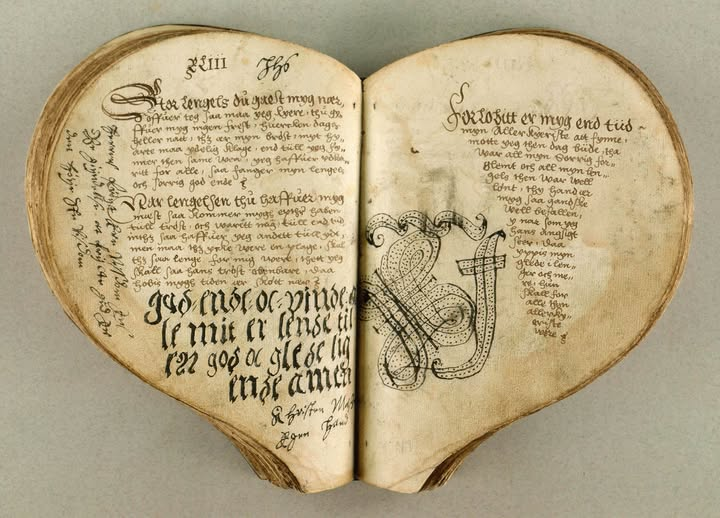
Two Women Trying to Catch Flying Hearts in a Net. Attributed to the ‘Master of the Chronique Scandaleuse’ for Pierre Sala’s Petit Livre d’Amour. 1st quarter of the 16th century
Venus 15th century Manuscript in Christine de Pizan’s “L’Épître Othéa” (The Epistle of Othea)
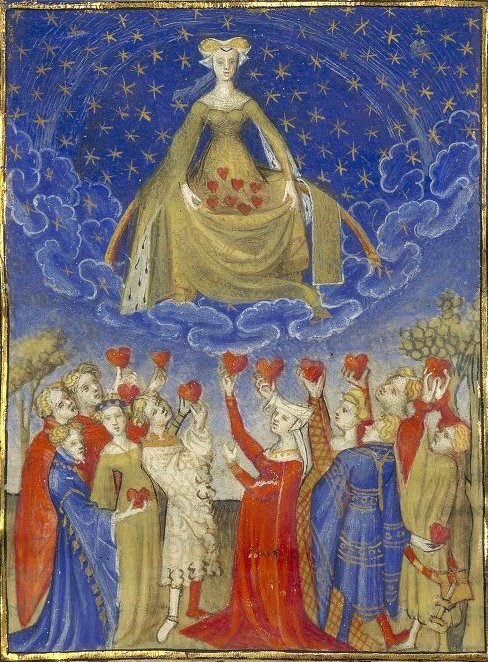
A Separate Burial for the Heart
Richard I, Richard the Lionheart’s heart was buried apart from his body. His body lies with Eleanor of Aquitaine (a statue of the queen with an open book on her hands is stretched on her tomb) and her Husband Henry II. Richard, is the son.
During the French Revolution, the abbey was sacked and the tombs vandalised, while the human remains were exhumed and scattered and have never been located.
When he died in France in 1199 his heart was embalmed with herbs and spices, wrapped in linen, placed in a leaden box, and given a separate burial inside the Cathedral in Rousen.
Egyptians preserved viscera in four canopic jars, except for the heart – which was removed, mummified, and returned to the chest so as to be present at time of judgement to bear witness for the deceased.
From this period to the seventeenth century, French kings and queens were routinely given two burial sites, one for the heart and another, usually Saint Denis, for the rest of the body.
Louis XIV’s heart, entrail and body was, during the French Revolution, disinterred and the heart was sold to an artist to be ground up and used as mumia for paint.
The Independent Heart
Instances of the heart acting autonomously, or the heart’s owner speaking to it.
Charles d’Orléans is taken prisoner by English, and spent 25 years in captivity. While imprisoned he treats his heart as an intimate friend whom he conducted ongoing conversations:
The other day I went to see my heart To discover how it was faring. And I found Hope right beside him Sweetly offering him comfort. “Heart, you can now be joyful!… Since I can truthfully tell you That the most beautiful woman in the world Does love you with a loyal heart.”
Villon’s short poem “The Debate of the Heart and the Body” the heart is given a voice and becomes his conscious. Each one tries to change the lifestyle of the other. Each stanza ends with a refrain from both parties
I’ve nothing more to say. That suits me fine.
The Return of Cupid
Cupid’s mother was Venus, the goddess of love, but his paternity is less certain (usually ascribed to Mars, the god of War, or Mercury the god of merchants and messengers.)
Heart-shaped maps of the world, called cordiform by cartographers appeared in Europe in the 16th century.
Oronce Fine’s cordiform (heart-shaped) map
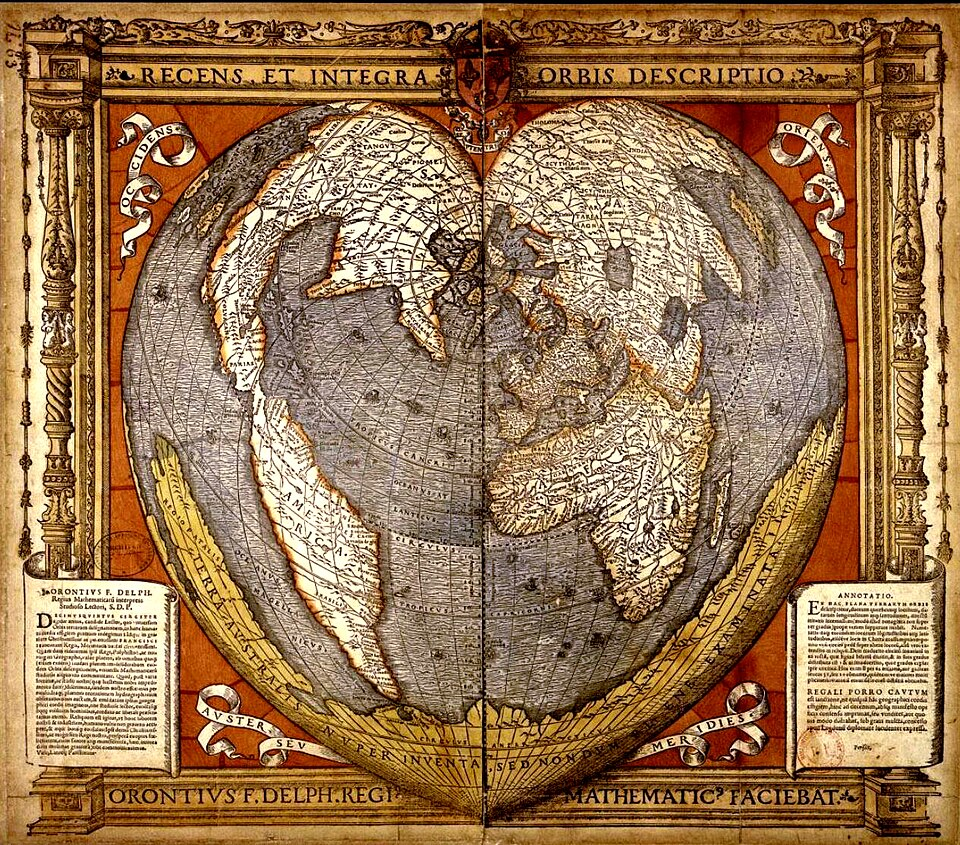
We offer to you, Dear Reader, a representation of the entire world according to the views of modern Geographers and Hydrographers, preserving the proportion of the centre to both the Equator and the latitudes, laid out on a plane in the form of a double human heart; of which the left comprises the northern part and the right the Southern part of the World. Therefore, receive this small gift kindly; and thank Christian Wechel, by whose good will and at whose expense I have shared it with you. Farewell, July, 1531.
Shakespeare
Sir Philip Sidney, wrote one of the most widely anthologized poems about the heart “My True Love Hath My Heart”
My true love hath my heart and I have his,
By just exchange one for the other given:
I hold his dear, and mine he cannot miss;
There never was a bargain better driven.
His heart in me keeps me and him in one;
My heart in him his thoughts and senses guides:
He loves my heart, for once it was his own;
I cherish his because in me it bides.
His heart his wound received from my sight;
My heart was wounded with his wounded heart;
For as from me on him his hurt did light,
So still, methought, in me his hurt did smart:
Both equal hurt, in this change sought our bliss,
My true love hath my heart and I have his.
Exchange of hearts signals true love.
Heart appears more than a thousand times in Shakespeare’s sonnets and plays, almost as often as the word love.
Romeo professes love for Rosaline, but when he falls in love with Juliet he recognizes the difference immediately.
Did my heart love till now? forswear it, sight! For I ne’er saw true beauty till this night.
Heart and Brain
1628 English Physician William Harvey published a book On the Motion of the Heart and Blood in Animals that offered proof that the heart’s main function was to pump blood through the body.
As far back as Greeks physicians believed in the four humors - blood, phlegm, bile, choler. The proportion of these humors caused character and mood. The role of the heart was to regulate humors, and Hippocrates believed all mental functioning was situated in the heart.
Artistotle - Pneuma, air that animated the soul.
Andreas Vesalius (1514–1564) – the father of modern anatomy with De humani corporis fabrica (The Fabric of the Human Body). He was allowed to dissect cadavers thanks to Judge who supplied bodies of executed criminals. He drew conclusions based on his own observations, experimentation, and discoveries. He refuted Galen and the work had 200 illustrations.
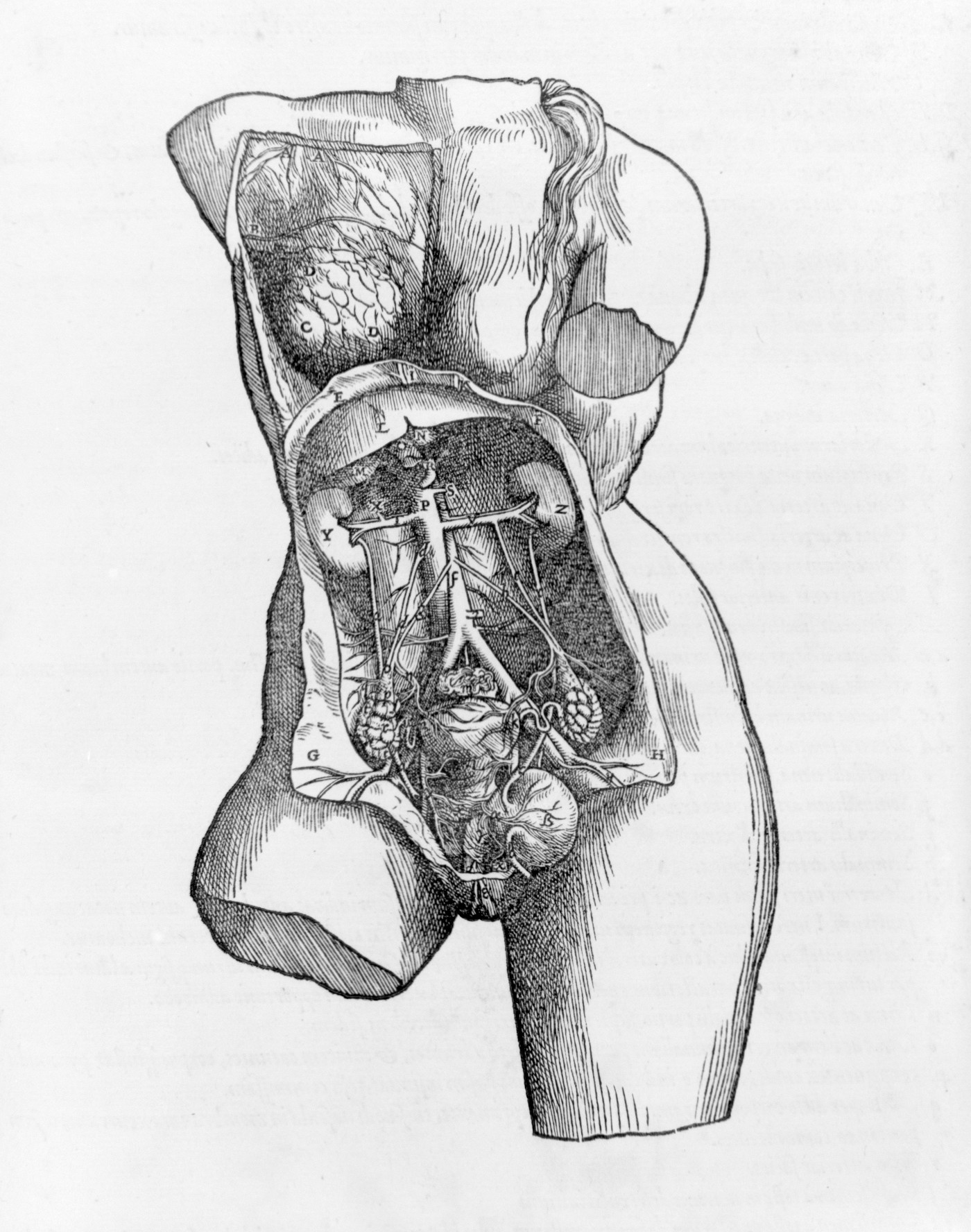
Parts of the female anatomy were considered heart shaped, in the 1560s the Uterus was seen “in the form of a man’s heart, as it is painted.” Vesalius had an engraving in Fabrica that depicted female vaginal anatomy as heart-shaped.
The new medical discoveries starting in the Renaissance challenged longstanding ideas about the seat of human emotions.
Once the scientists took over, as they did increasingly from the Renaissance onward, the metaphoric heart had to defend itself from being reduced to a mere pump.
Popular Culture
American Group, Independent Order of Odd Fellows adopted heart-in-hand as its official emblem.
“Whatever the hand goes forth to do, the heart should go forth in unison.” Put another way, the hand should be guided by the heart.
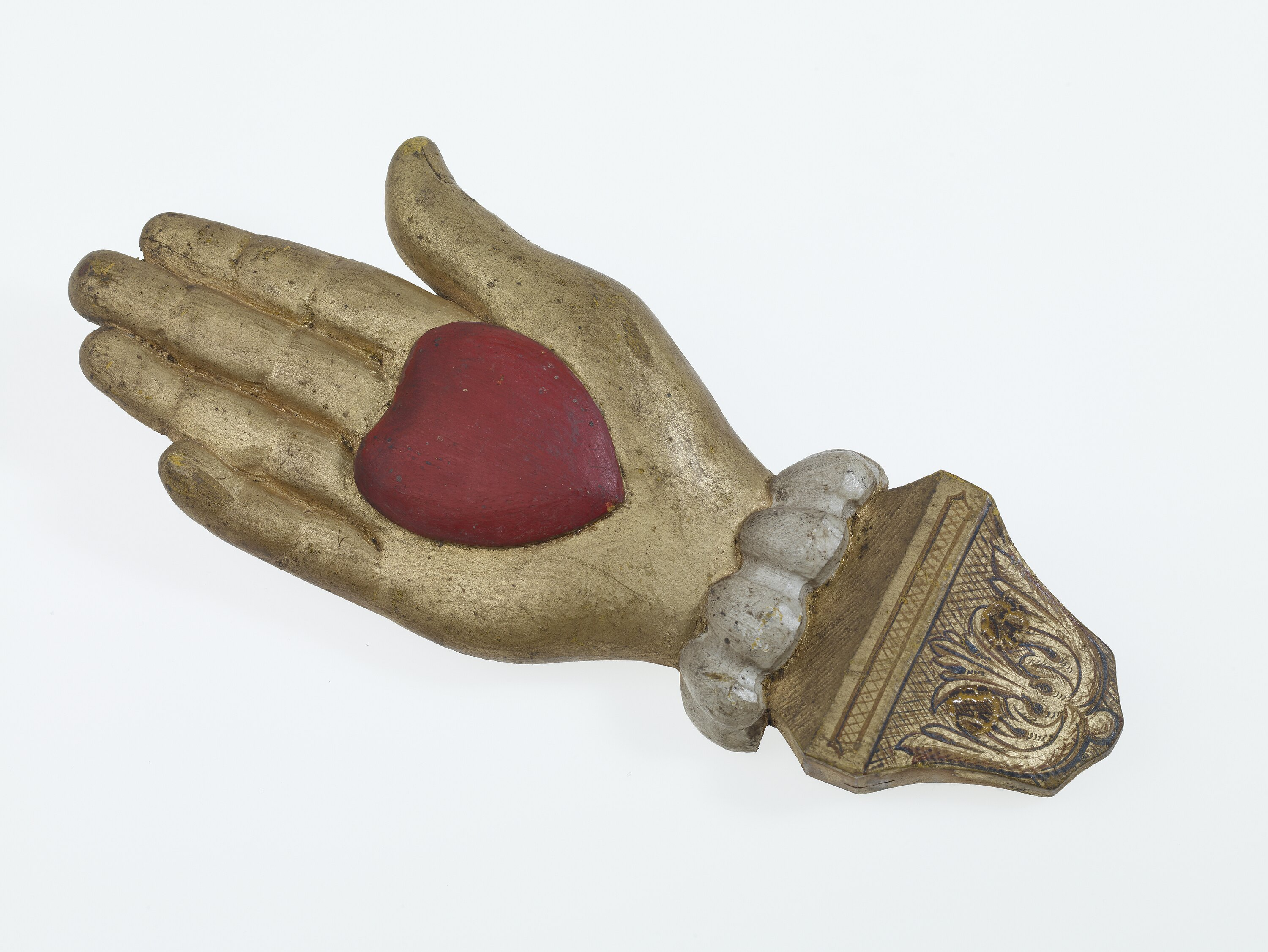
19th century folk artists embraced the motif. “They made everything in the shape of a heart, from muffin molds and cookie cutters to butter presses, hat boxes, snuff boxes, keepsake boxes, pin cushions, mirror frames, metal trivets, and locks.”
Hearts and Hands
Heart, meant Love. Hand, meant Marriage.
Ancient Rome when, during the wedding ceremony, the matron of honor (pronuba) joined the spouses’ right hands, and the bride received the wedding ring she would wear throughout her marriage. Sometimes the ring itself bore the image of two clasped hands that represented the marriage contract.
When did love become the primary basis for marriage? From around 1600 onward a small but growing number of unions were initiated by love.
Lonely Hearts Ads
The first known ad, published in 1695, listed the female attributes required by a demanding gentleman, most notably wealth. Early ads were forthright in their search for a wife with “a Fortune of 3000 [pounds] or thereabout.” Lest we find this ad unusually mercenary, we do well to remember that a person’s fortune was usually common knowledge and that newspapers often printed at the end of the wedding announcement the sum that a woman brought to the marriage. But from the mid-eighteenth century onward romantic love was emphasized over practical considerations, following the model found in sentimental novels. More and more often during the second half of the eighteenth century the ads placed by men expressed their hope to find a woman with a “feeling” or “tender” heart, attributes considered the province of women, though some men, too, described their own hearts as “full of affection, sensibility, and delicacy.”
Doctrine of Separate Spheres
Tennyson’s The Princess excerpt:
Man for the field and woman for the hearth: Man for the sword and for the needle she: Man with the head and woman with the heart: Man to command and woman to obey; All else confusion
Romanticism
Romanticism honored the heart as the ultimate font of love and truth.
Byron writes of her heart rather than his own.
And on that cheek, and o’er that brow, So soft, so calm, yet eloquent, The smiles that win, the tints that glow, But tell of days in goodness spent, A mind at peace with all below, A heart whose love is innocent!
Valentine’s
There are many theories of why Valentine’s Day became associated with love. For many centuries one of the most popular theories was it linked to pre-Christian feast called Lupercalia. On that day, Roman boys drew the names of girls from a love urn and the two “coupled” during the duration of the festival. But this connection has no firm foundation on fact.
More reliable sources say it developed in the Middle Ages, in the context of Anglo-French courtly love.
The French claim Oton de Grandson’s “Songe de la Saint-Valentin” (“Saint Valentine’s Dream”) and the English claim Geoffrey Chaucer’s “Parliament of Fowls” as the very first Valentine poems. Chaucer and Grandson—not only poets but also diplomats and friends—were undoubtedly familiar with each other’s work
“For this was on Seynt Valentynes day, Whan every foul cometh there to chese his make.” “For this was on Saint Valentine’s day, When every bird comes there to choose his mate.”
I <3 U
1977 the heart icon was used in the “I love NY” logo. Pop Art movement.
Trash piled up on the streets, the crime rate spiked, and New York City was near bankruptcy. Hired by the city to design an image that would increase tourism, Milton Glaser created the famous logo that has since become both a cliché and a meme
Jim Dine, “The Magnets”
